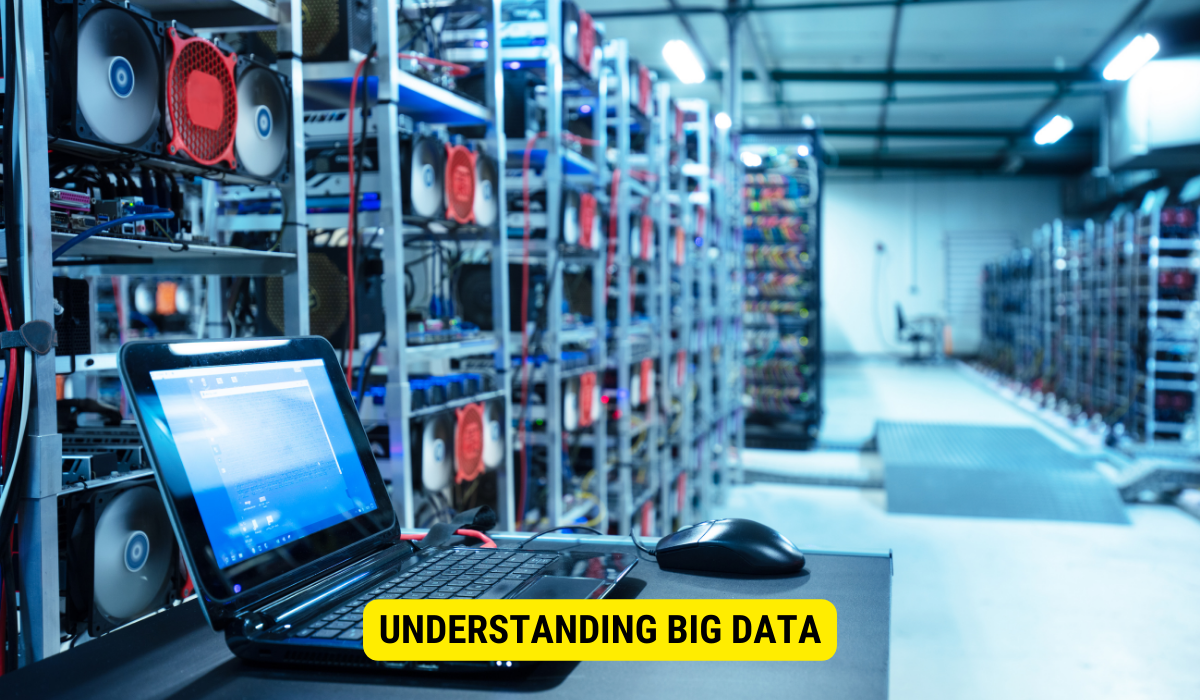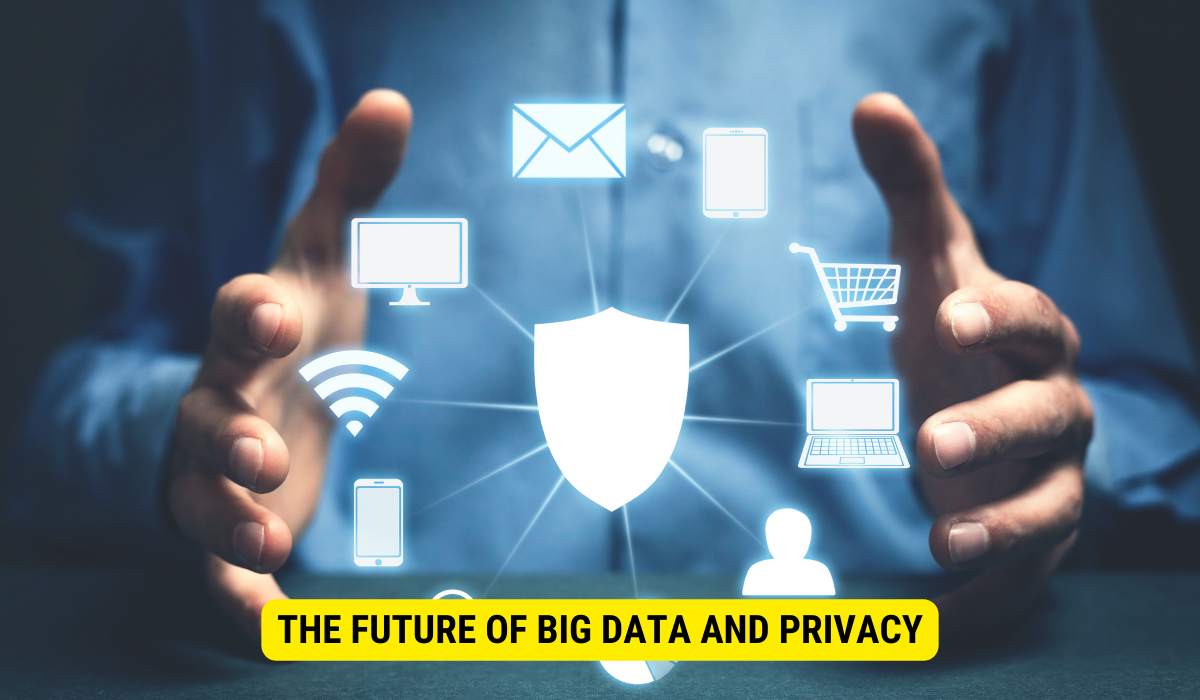Big data has significantly impacted privacy over the years by increasing the volume, variety, and velocity of personal data collection, prompting concerns about personal data protection surveillance by governments and corporations and leading to the development of privacy laws.
In today’s digital age, the immense growth of big data has profoundly impacted privacy. With the exponential increase in data collection and technological advancements, we find ourselves in a time when personal information is readily accessible, and privacy is becoming a scarce commodity. Understanding how big data has changed privacy over the years is crucial in navigating this evolving landscape.
Understanding Big Data
Before delving deeper into the implications for privacy, it is essential to grasp the concept of big data. Big data refers to vast volumes of structured, semi-structured, and unstructured data that are generated at an unprecedented rate. It encompasses information from various sources, such as social media, sensors, and transactions. This data holds immense value and can be analyzed to uncover insights and patterns.
Big data has become a driving force in today’s digital age, revolutionizing industries and transforming organizations’ operations. The sheer scale of data being generated is mind-boggling. To put it into perspective, millions of emails are sent every minute, thousands of tweets are posted, and hundreds of hours of video are uploaded to various platforms. This constant data flow creates a treasure trove of information to explore.
One of the defining characteristics of big data is its volume. The amount of data generated daily is colossal and continues to grow exponentially. Traditional data processing methods are not equipped to handle such massive datasets. This has led to developing new technologies and tools specifically designed to handle big data, such as distributed computing frameworks like Apache Hadoop and Apache Spark.
Another crucial aspect of big data is its velocity. Data is being generated and updated in real-time, demanding rapid processing and analysis. Organizations must be able to capture, store, and analyze data as it is being produced to gain timely insights and make informed decisions. Real-time analytics has become a critical capability for businesses across various sectors, enabling them to respond quickly to market trends and customer demands.
Furthermore, big data encompasses a wide variety of data types. It is not limited to structured data, such as traditional databases, but also includes semi-structured and unstructured data. This includes text documents, images, videos, social media posts, sensor data, and more. The ability to analyze and derive meaning from such diverse data sources has opened up new possibilities for businesses, enabling them to gain a more comprehensive understanding of their customers, products, and markets.
However, the integrity of big data poses a significant challenge. With the vast amount of data being generated, ensuring its reliability and accuracy is crucial. Data quality issues, such as inconsistencies, errors, and biases, can significantly impact the insights derived from big data analytics. Organizations must invest in data governance and quality assurance processes to mitigate these risks and ensure the integrity of their data.
Defining Big Data
Big data is considered by its volume, velocity, variety, and veracity. The sheer amount of data generated daily is colossal and continues growing rapidly. This data is produced at high speeds and needs to be processed quickly to extract meaningful information. Additionally, big data encompasses various data types, including text, images, videos, and more. Lastly, the veracity of big data refers to its reliability and accuracy, as data quality is often a challenge.
Regarding volume, big data is measured in terabytes, petabytes, and even exabytes. To put it into perspective, a single terabyte can hold about 500 hours of high-definition video. With the increasing adoption of technologies like the Internet of Things (IoT), the volume of data generated is expected to grow exponentially in the coming years. This presents opportunities and challenges for establishments, as they must find ways to effectively store, process, and analyze such massive amounts of data.
Velocity is another critical aspect of big data. With the advent of real-time data streaming and IoT devices, data is being generated at an unprecedented speed. For example, sensors embedded in manufacturing equipment can make thousands of data points per second, providing real-time insights into machine performance and maintenance needs. Organizations need the infrastructure and capabilities to handle this velocity of data to derive timely insights and take immediate action.
Big data is not just about structured data stored in traditional databases. It includes various data types, including unstructured and semi-structured data. Unstructured data refers to info that does not have a predefined data model or format, such as text documents, emails, social media posts, and multimedia content. Semi-structured data, on the other hand, has some organizational structure but does not fit neatly into traditional relational databases. Examples of semi-structured data include XML files, JSON documents, and log files. Analyzing and making sense of these diverse data types is crucial for organizations to unlock the full potential of big data.
Lastly, the veracity of big data refers to the reliability and accuracy of the data. Ensuring data quality is a significant challenge in the world of big data. With the sheer volume and variety of data being generated, there will inevitably be inconsistencies, errors, and biases in the data. For example, social media data can be subjective and prone to misinformation. Organizations must implement robust data governance practices and quality assurance processes to ensure the integrity of their data and the insights derived from it.
The Evolution of Big Data
The concept of big data has evolved significantly over time. Initially, the term was used to describe large datasets that exceeded the capabilities of traditional data processing. However, as technology advanced, big data expanded beyond size limitations, incorporating velocity, variety, and veracity. This evolution has opened up new opportunities for organizations to gain valuable insights from data but has also raised privacy concerns.
In the early days of big data, organizations struggled to process and analyze large datasets due to hardware and software limitations. Traditional databases and data processing tools were not designed to handle such massive data. However, with the advent of distributed computing frameworks like Apache Hadoop and Apache Spark, organizations gained the ability to process and analyze big data in a scalable and cost-effective manner. These frameworks allow for parallel processing across multiple nodes, enabling organizations to harness the power of distributed computing to handle big data workloads.
As big data technologies matured, organizations started to realize the value of not just structured data but also unstructured and semi-structured data. The ability to analyze text, images, videos, and other unstructured data opened up new possibilities for gaining insights and making data-driven decisions. Natural Language Processing (NLP) and computer vision procedures enabled organizations to extract meaning from text and images, uncovering sentiment analysis, topic modeling, and object recognition.
Furthermore, the rise of social media and the proliferation of connected devices fueled the growth of big data. Social media platforms make vast amounts of data every second, including user-generated content, interactions, and sentiments. This data provides valuable insights into consumer behavior, preferences, and trends. Similarly, connected devices, such as wearables and IoT devices, generate real-time data that can be utilized for various purposes, including remote monitoring, predictive maintenance, and personalized recommendations.
However, as big data became more prevalent, privacy and data protection concerns emerged. The sheer amount of data being collected and analyzed raised questions about the ethical use of data and the potential for misuse. Organizations had to navigate the fine line between leveraging data for innovation and ensuring the privacy and security of individuals. This led to the development of regulations and outlines, such as the General Data Protection Regulation (GDPR), to protect individuals’ rights and provide guidelines for responsible data handling.
In conclusion, big data is a complex and multifaceted concept encompassing vast volumes of data generated at an unprecedented rate. It is categorized by its volume, velocity, variety, and veracity. The evolution of big data has transformed industries and opened up new opportunities for organizations to gain valuable insights. Though, it has also raised concerns regarding privacy and data protection. As technology advances, the world of big data will continue to evolve, presenting challenges and opportunities for organizations in the digital age.
The Intersection of Big Data and Privacy
As society increasingly relies on technology, privacy has evolved in parallel. In the digital age, privacy encompasses preserving personal information and the right to control its access and use. However, with the rise of big data, traditional notions of privacy are being challenged.
The Concept of Privacy in the Digital Age
The digital age has introduced new dimensions to privacy. Personal information is no longer limited to physical surroundings but extends into the vast realm of cyberspace. Online activities, such as browsing habits, social media interactions, and location data, generate a wealth of information that can be collected, analyzed, and monetized. Consequently, individuals are now faced with an increased vulnerability and a loss of control over their data.
How Big Data Impacts Personal Privacy?
The collection and analysis of big data often involve the aggregation of massive amounts of personal information. Our digital footprints leave a trail of valuable data, from online purchases to social media posts. This data is then analyzed to derive insights, which can be used for targeted marketing, profiling, or even determining eligibility for certain services. While this may bring convenience and personalization to our daily lives, it compromises our privacy.
The Role of Big Data in Surveillance
One aspect where big data has significantly impacted privacy is in the realm of surveillance. Both government entities and corporations employ big data analytics to monitor individuals, leading to concerns about the erosion of privacy rights.
Government Surveillance and Big Data
Government surveillance programs have garnered widespread attention in recent years. By assembling and analyzing massive amounts of data, governments claim to enhance national security and combat potential threats. However, concerns have been raised about the scope of this surveillance and its potential for abuse, leading to debates on the balance between security and privacy.
Corporate Surveillance and User Privacy
Corporations also utilize big data to monitor user behavior and tailor their products or services accordingly. These practices aim to improve customer experiences and advertising effectiveness. However, collecting personal data without explicit consent raises significant privacy concerns. Users are often unaware of how much their activities are tracked, further intensifying the need for privacy regulations.
Big Data and Privacy Laws

The rapid growth of big data has prompted the implementation of privacy laws to safeguard individuals’ rights. These laws provide a framework for organizations to handle personal data responsibly.
The Emergence of Privacy Laws
Privacy laws have emerged globally to address the challenges posed by big data. Forple the,
The Impact of Big Data on Privacy Legislation
Big data has undoubtedly influenced the development of privacy legislation. The growing awareness of privacy concerns and the need to protect individuals’ rights are reflected in these laws. However, balancing encouraging innovation and ensuring privacy remains an ongoing challenge.
The Future of Big Data and Privacy
The future landscape of big data and privacy presents opportunities and challenges. Balancing the power of big data with privacy preservation will be essential in shaping a sustainable digital society.
Predicting the Impact of Big Data on Privacy
The evolution of big data shows no signs of slowing down. With technological advancements, the amount of data generated will grow exponentially. As a result, individual privacy may face further vulnerabilities, requiring continuous adaptation of privacy regulations to keep pace with technological advancements.
Balancing Big Data and Privacy in the Future
Striking a delicate balance between harnessing the potential of big data and preserving privacy will be crucial. Innovations in privacy-enhancing technologies and methodologies, such as differential privacy and secure multiparty computation, hold promise in safeguarding privacy while enabling data-driven insights.
Key Takeaways
- The magnitude of Big Data: The volume of data generated daily is colossal, encompassing various types of information, demanding rapid processing, and posing significant challenges related to its reliability and accuracy.
- Privacy Concerns: The aggregation of vast amounts of personal information for analysis and insights, especially without explicit user consent, compromises privacy.
- Surveillance Implications: Both governments and corporations use big data analytics for surveillance, sparking debates about the erosion of individual privacy rights.
- Emergence of Privacy Laws: The surge of big data has accelerated the development of global privacy regulations, aiming to ensure responsible data handling.
- Future Landscape: Balancing the advantages of big data with privacy concerns will be paramount, requiring innovations in privacy technologies and continuous adaptation of regulations.
FAQs
What is big data?
Big data refers to vast volumes of structured, semi-structured, and unstructured data generated at an unprecedented rate from diverse sources such as social media, sensors, and transactions.
How has the digital age changed our understanding of privacy?
In the digital age, privacy now extends to preserving personal information in cyberspace due to the vast data generated from online activities.
How does big data influence surveillance?
Big data enables enhanced surveillance capabilities for government entities for national security purposes and corporations for monitoring user behavior.
What are some prominent privacy laws introduced due to big data concerns?
Regulations like the European Union’s General Data Protection Regulation (GDPR) and the California Consumer Privacy Act (CCPA) have been implemented to grant individuals more control over their personal information.
What does the future hold for big data and privacy?
The continued growth of big data will challenge individual privacy, necessitating the continuous evolution of privacy regulations and the development of privacy-enhancing technologies.
Conclusion
The era of big data has ushered in transformative potential for industries and societies, but it has also challenged traditional boundaries of privacy. As the digital landscape evolves, ensuring privacy remains a fundamental right will be crucial. Collaborative efforts between various stakeholders and technological advancements can pave the way for a harmonious coexistence of big data benefits and robust privacy safeguards.
